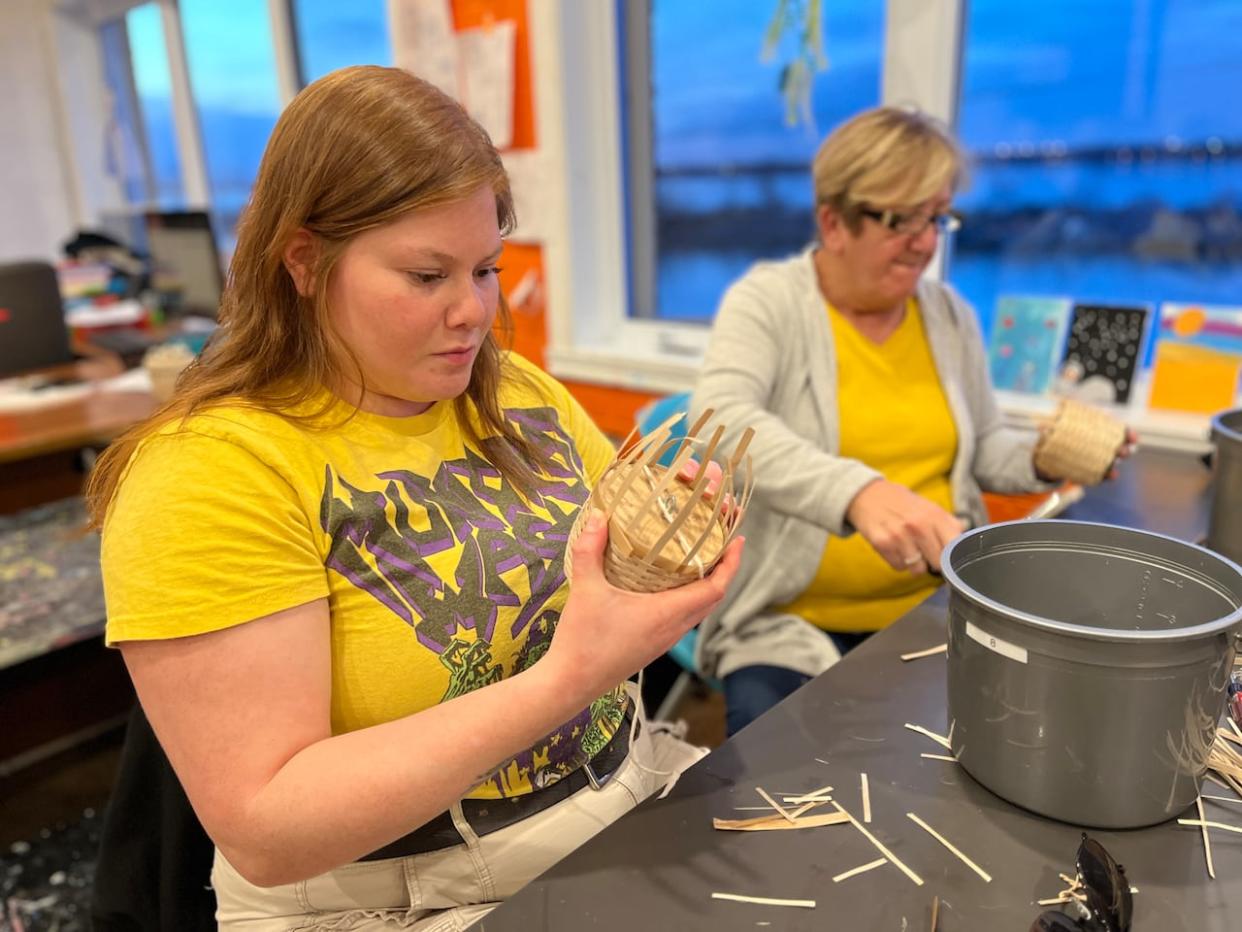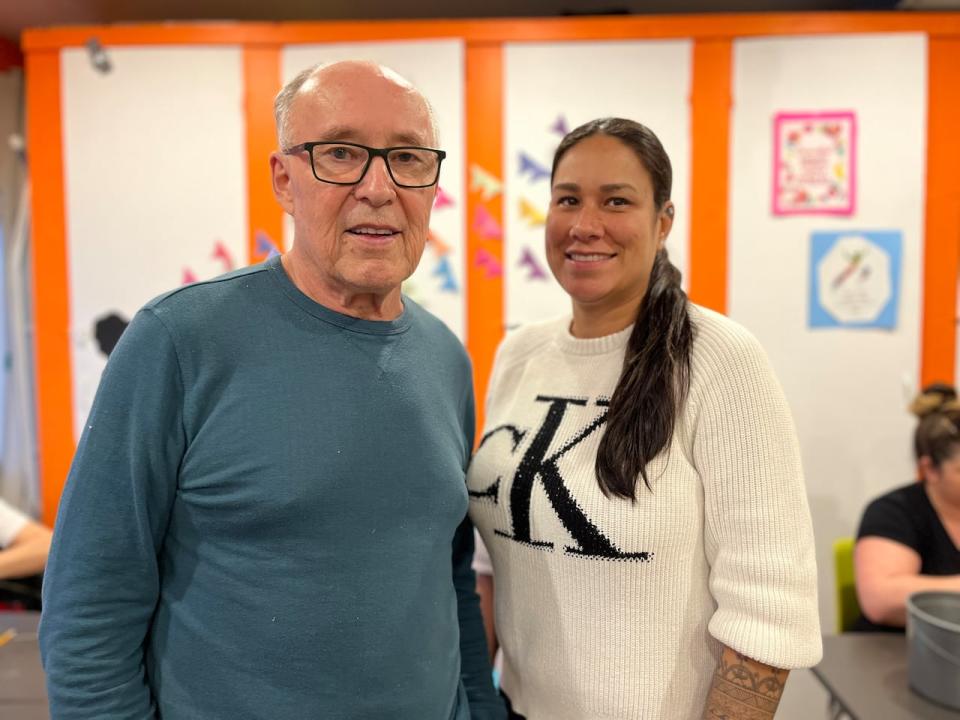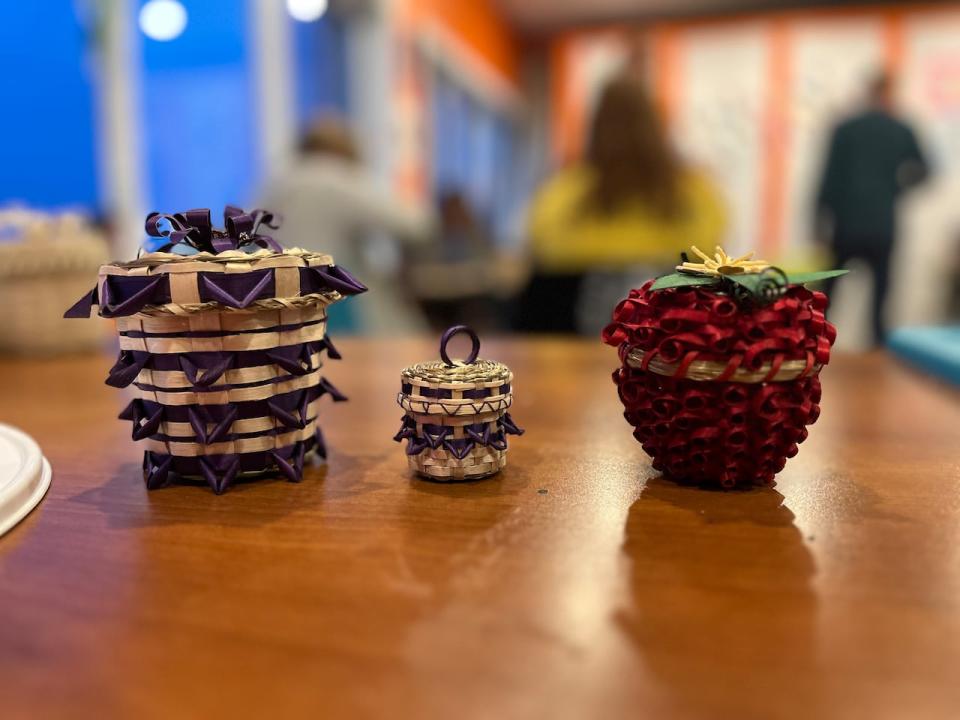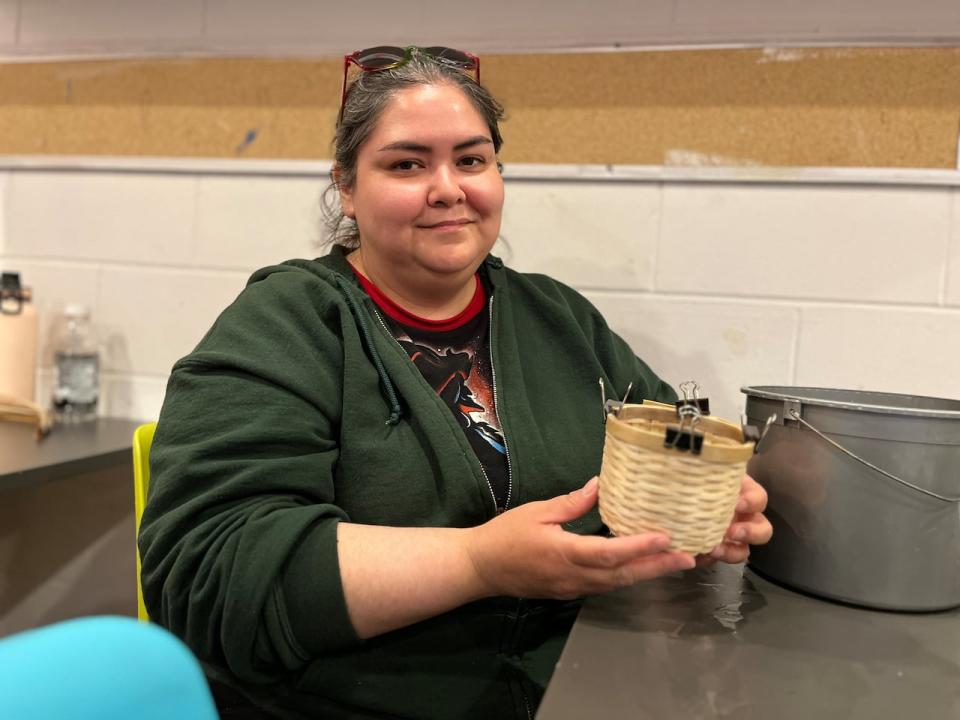Passing on the art of Kanien'kehá:ka basketry, one lesson at a time

Chelsea Phillips learned how to make traditional Kanien'kehá:ka (Mohawk) baskets three years ago, and now is teaching others in her community.
"It's part of our culture, and part of our roles and responsibilities, there's certain baskets that go along with that," said Phillips, who is from Kahnawà:ke, south of Montreal.
"I want to incorporate the teachings of the baskets so it keeps our culture alive."
Phillips is teaching a four-week basket-making class at the Kahnawà:ke Youth Center as one of the many activities taking place throughout the community's annual Cultural Awareness Month.
Participants are learning how to weave a small round fancy basket out of black ash splints and sweetgrass.

Chelsea Phillips, right, learned to weave ash baskets from her mentor Richard Nolan, who has been teaching the craft in Kahnawà:ke for the last 15 years. (Ka’nhehsí:io Deer/CBC)
"I've always been interested in learning about the history of basket making in our community, because it's something that I didn't really grow up with," said Katsi'tsanó:ron McGregor, one of the participants.
She said the experience has been fun so far.
"I am excited. I've been working diligently. I am surprised it came out as well as it did," said McGregor.
Ash trees under threat
Different styles of baskets are used for utility as well as for ceremonies. They're made from ash logs that are pounded and split into thin strips. The splints are soaked in water to make them easier to bend during weaving.

Different styles of baskets are used for utility as well as for ceremonies. Fancy baskets are made with thinner splints and are more decorative. (Ka’nhehsí:io Deer/CBC)
"It's really important to carry on the cultural component but also the technique of it," said Phillips.
Black ash trees are under threat in the region as a result of the emerald ash borer, an invasive beetle that is killing ash trees across North America. The beetle was detected in Kahnawà:ke in 2015, and remains a concern to local basket makers.
"I don't know how long it'll carry on for…. I'm continuing to teach for as long as I can have the splints for," said Phillips.
"Teaching is the really gratifying part…. You're teaching a basket but sometimes it comes out different for everyone because they can put their own touch into it. I love it all."
Keeping knowledge alive
Phillips learned how to make ash baskets from her mentor Richard Nolan. Other Kanien'kehá:ka communities like Akwesasne are well-known for their long lines of basket makers, but Nolan is one of the few in Kahnawà:ke. He has been teaching others the craft for the last 15 years.
"I think it's really important to carry it on. Akwesasne has so many basket makers and they're really amazing, so I want our community to grow in that area of basketry," said Phillips.

Katsi’tsanó:ron McGregor is one of the participants in the four-week basket-making workshop. (Ka’nhehsí:io Deer/CBC)
Nolan, who was in attendance for the class, said he appreciates that Phillips has taken on teaching others.
"It makes me feel great knowing that it is still going to be kept alive," he said.
"I know once I'm gone, she's going to keep it going, and hopefully someone takes an interest in asking her, show me everything you know and just to keep it going like that."
WATCH: The delicate art of basket-making

